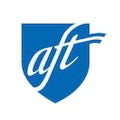Women in labor history
This Women’s History Month, we honor the part women have played in labor history, from Mother Jones, who was named the “most dangerous woman in America” at the turn of the 20th century, to AFT President Randi Weingarten, who was called “the most dangerous person in the world” in 2022. At one time, labor had a reputation as a big, brawling, male-dominated game, but it would be a mistake to overlook some of the powerful figures who played key roles, with their own signature style. Here are a few to remember. To learn more about the AFT’s current work on women’s history and women’s rights, check out our Women’s History Month page. For more educational resources on women’s history and experiences, go to Share My Lesson’s newest collection.
Mother Jones
Born sometime in the 1830s, Mary Harris Jones was an Irish immigrant who briefly worked as a teacher and dressmaker. She lost her husband and all four children to a yellow fever epidemic in 1867, and four years later endured another tragedy when the Great Chicago Fire took everything else. Shortly thereafter, she poured herself into the labor movement, organizing coal miners, steelworkers, railway workers and textile workers with fiery rhetoric and steely determination that led to multiple arrests. She became famous for opposing child labor, at one point leading 100 children on a march from Philadelphia to New York City.
“I am not afraid of the pen, or the scaffold, or the sword.” -Mother Jones
Addie Wyatt
When Addie Wyatt went to work as a typist in 1941 Chicago, she quickly learned that there were no Black typists — she’d actually been hired to can stew in the meatpacking plant. Soon after, she joined the United Packinghouse Workers of America and became UPWA’s first female international vice president — the first Black woman to hold such a union office. She was deeply committed to the civil rights movement, known for elevating Black women in the labor movement, and committed to underprivileged and overlooked workers. Time magazine named her among the 1975 Women of the Year for “speaking out effectively against sexual and racial discrimination in hiring promotion and pay.”
“Each of us is a link in this great union chain that stretches around the world. I will try every day to keep my link united, active and strong.” -Addie Wyatt
Dolores Huerta
Best known as the co-founder of the United Farm Workers of America, Dolores Huerta is a powerhouse union organizer who made a particular impact improving the lives of Latino workers. As a teacher, she was heartbroken over her students’ poverty and decided she could do more good as a labor organizer. Huerta’s personal experiences fueled her determination and grit as she fought discrimination at all levels, co-founding a chapter of the Community Service Organization and working on voting drives and economic improvements for her community. She founded the Agricultural Workers Association and, with Cesar Chavez and the United Farm Workers, led strikes and boycotts, winning better wages and conditions for millions of workers. She also defied convention, combining her dedication to the movement with raising 11 children. At age 93, Huerta continues to advocate for pro-worker legislation and fights to elect more women and Latinos to political office.
“I think organized labor is a necessary part of democracy. Organized labor is the only way to have fair distribution of wealth.” -Dolores Huerta
Margaret Haley
A pioneer in the teachers union movement, Margaret Haley joined the Chicago Teachers Federation in 1897 and quickly became a leader in the woman-dominated union — an anomaly at a time when other education unions were led by male administrators. She taught in the meatpacking district, notorious for its mistreatment of workers and for the poverty among its families; classrooms typically had 50 or 60 children, and teachers were treated like unskilled laborers, expected to adhere to a strict curriculum dictated by the district. Haley fought for pay increases, pensions and an end to the “factoryization” of teachers, but also knit together the social issues of her day — child labor and women’s suffrage, among them — and used the union to advance the public good.
“It will be well indeed if the teachers have the courage of their convictions and face all that the labor unions have faced with the same courage and perseverance.” -Margaret Haley
Sue Ko Lee
The labor movement was complicated for Chinese Americans like Sue Ko Lee: For years unions supported the Chinese Exclusion Act to limit immigration; white employers refused to hire Chinese workers; and some Chinese employers, as part of a close-knit community, were difficult to confront. But Lee persisted and played an important role integrating the ranks of those fighting for safe and fair working conditions in the garment industry. She worked for 25 cents an hour as a buttonhole operator at the National Dollar Stores, a Chinese-owned business in San Francisco’s Chinatown that paid significantly less than white-owned factories. Lee helped organize the Chinese Ladies’ Garment Workers’ Union as a chapter of the International Ladies’ Garment Workers’ Union, and through bilingual bargaining sessions and a three-month strike, won higher wages and a 40-hour workweek.
“In my opinion, the strike was the best thing that ever happened. It changed our lives. We overcame bigotry, didn’t we?” -Sue Ko Lee
